The ever popular Loka and Loka UL were favorites among many outdoor adventure photographers and filmmakers I know, including myself. With F-Stop Gear's recently updated line of Mountain Series packs, the Loka has been reborn and is now known as the Ajna. I've been using it for the last few weeks and discovered some surprising details about it.
If you're not already familiar with F-Stop Gear packs and bags, I'll briefly bring you up to speed. The produce a large line of camera bags and packs, with a focus on being built for comfort and durability when being used in the outdoors. You don't have to look over very much of their website to see how– their gear has many technical features and a variety of sizes depending on your kit and the kind out outdoor activity you're doing. One thing that does separate F-Stop Gear from its competitors are their ICUs (Internal Camera Units) which are customizable inserts that hold your camera gear. ICUs can be moved from one bag to another, put into a roller, removed when forced to gate check a bag, and it keeps your kit separated from whatever else you have packed. Below is the Ajna unzipped, with a large ICU carrying some lenses and gear on a recent shoot.

The Ajna works with an ICU just like the Loka, with it being accessed through the front of the pack itself. The Ajna is 40 liters, has a small top pocket, hip belt, chest strap, and adjustable straps for fitting it to your body. All of this existed with the Loka and Loka UL, but there are a few notably different features that the Ajna has that make it different. I'll go over some of these features by using examples of how I used this pack over the last few weeks.
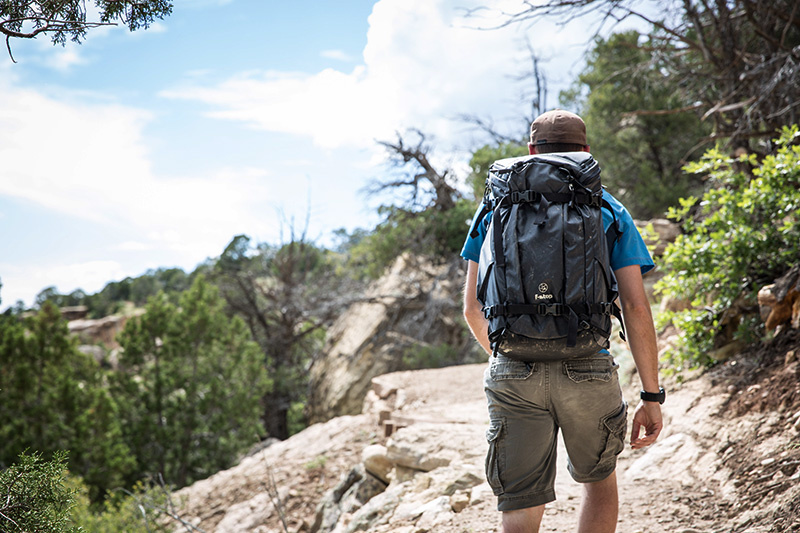
The first and most noticeable change is the material. Not only is it available in several colors, but it is a bit more shiny than the Loka, and to the touch it feels just ever so slightly more durable. It reminds me of the same material often found on rain jackets or other clothes with soft shell fabric. I was doing some location scouting on a tourism video for Southwest Colorado, and took an unplanned fall onto a rocky trail, landing right on the bag. No rips, and no problems with the gear inside of it either.
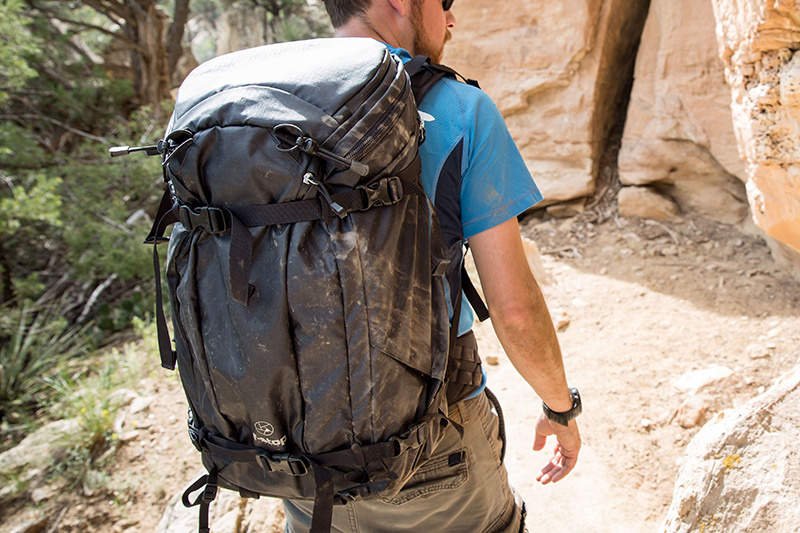
So the durability seems on point. I was eager to see how waterproof the bag might be though. Of course, in a real storm I would cover it with a proper rain cover (available separately) but in the event of an unexpected light rain, I wanted to see how the Ajna would hold up. Since my pack was now all covered in dirt, I figured I might as well hose it off.
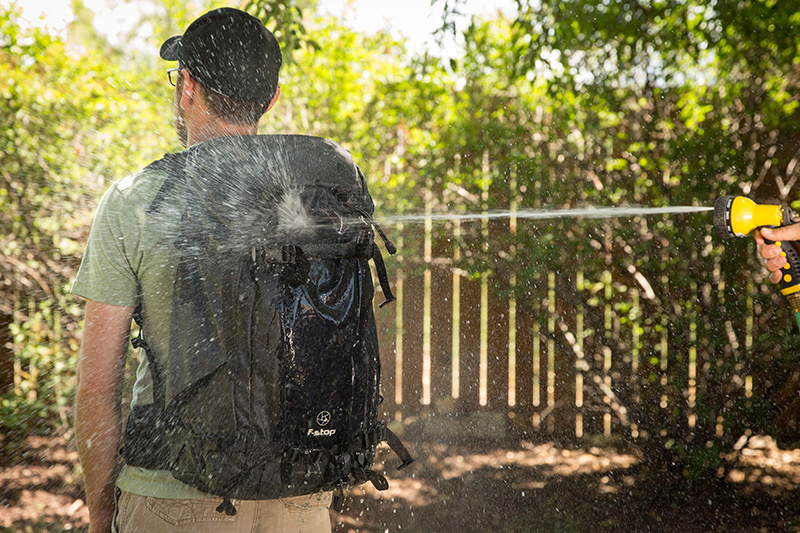
We sprayed a strong jet of water from just a few feet away, and then we set the nozzle to "shower" and gave it a bath from above, trying to simulate a good rain. I found that the interior of the outer pocket, the top compartment, as well as the main compartment all got a little wet on the inside. We put paper towels in each place and then checked for wetness– it seems as though the the bag leaked every so slightly through the start of the zipper seam, which I'm pointing at in the photo below.
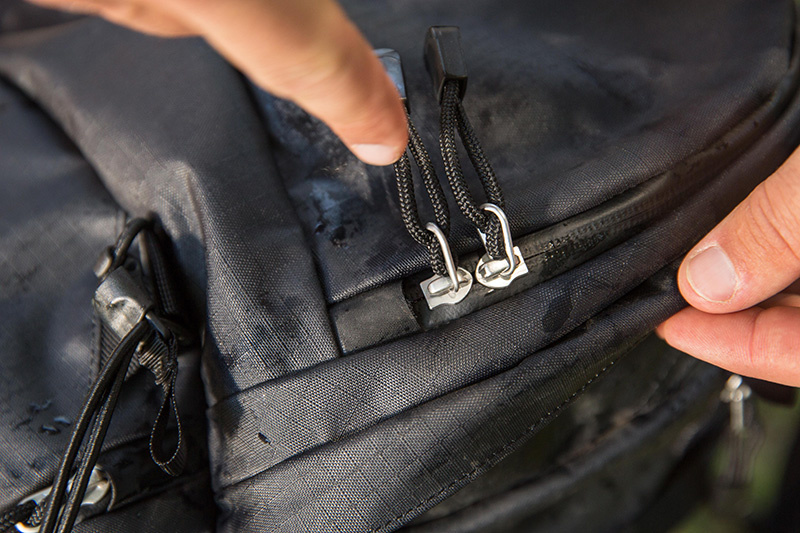
This isn't too surprising, since we used a higher pressure stream from so close, but even the shower from above allowed some moisture to sneak in. I could imagine that during a full on rain, you could get water pooling a little bit, especially if the bag isn't fully packed. If this were to happen, the water would find a way in.
The material itself didn't seem to hold much wetness, but I wouldn't trust it to keep things dry in a full downpour for more than 10 minutes. The point is this– if you're going to be out in more than a light rain with $10,000 worth of gear, get a proper rain cover and use it. The Ajna even has a storage pocket for one. For unexpected storms that you won't be hanging around in for too long, your gear will be fine, but don't expect it to stay dry without another layer of protection from water.
A minor change from the Loka is the placement of the stash compartment on the back, at least in terms of the zipper. Instead of being right in the center, it's now offset to one side and I think it actually makes it a bit more accessible and easier to stow a jacket, hat, or pint of whiskey.

Another change is the removal of the side mesh pockets, but now there are zips that run up and down the length of the bag, that have a small velcro expansion fold. I was able to fit things like a one liter water bottle, sunscreen, and a dog leash (all separately) in these, and other small accessories would fit as well. I always thought that the mesh pockets on the Loka were just a touch short, but they were great at holding the same aforementioned items. I don't like or dislike the new style, but it is different.

The Ajna fits just as well as its predecessor, and was comfortable on long, sweaty hikes. I used a large ICU on most hikes, and strapped small tripods and even a Kessler Stealth Slider to the outside of it. The loops on the back were good for quickly securing my climbing helmet or hiking pole, and the stitched loops on the hipbelt made a perfect spot for my keys and leatherman multitool.

Other small, but smart, features in the Ajna that I found myself enjoying were these, in no particular order:
• When hiking I could place my keys on a special clip in the top compartment so they didn't get lost in the shuffle of small items.
• The inside flap of the main compartment zipper has a tight zippered pocket and stitched loops– an interesting addition which allows for using camera bags instead of ICUs on the inside. See the :50 mark of this video for an example of an F-Stop Gear Navin being used, but keep in mind that you could probably use other small camera bags too– perfect if you have a favorite small bag already and want to use it.
• On long hikes, I like to use a water bladder. Yesterday I hiked a 10 mile out-and-back trail to a 13,000 foot peak, so I was drinking water often. The Ajna has a pocket for water bladders, but I didn't realize until I started hiking that there is a handy clasp to secure the hose to your shoulder strap! It's a small feature but very welcomed.

Overall this is another fantastic pack from F-Stop Gear. It will be hard to replace my Loka, but I might just keep both! I can see either pack doing a great job for many more years to come. The weather-proofing is a little bit better that the Loka, although maybe not as good as they suggest it is in the marketing materials– you need a rain cover to keep things dry in a moderate rain shower. It fits great and the capacity is perfect for a day hike with a personal camera kit plus essentials. Throw a large or medium ICU in this and you will not be disappointed.
Big thanks to Jakob Skogheim Photography for taking still photos of me using this bag over the last two weeks!
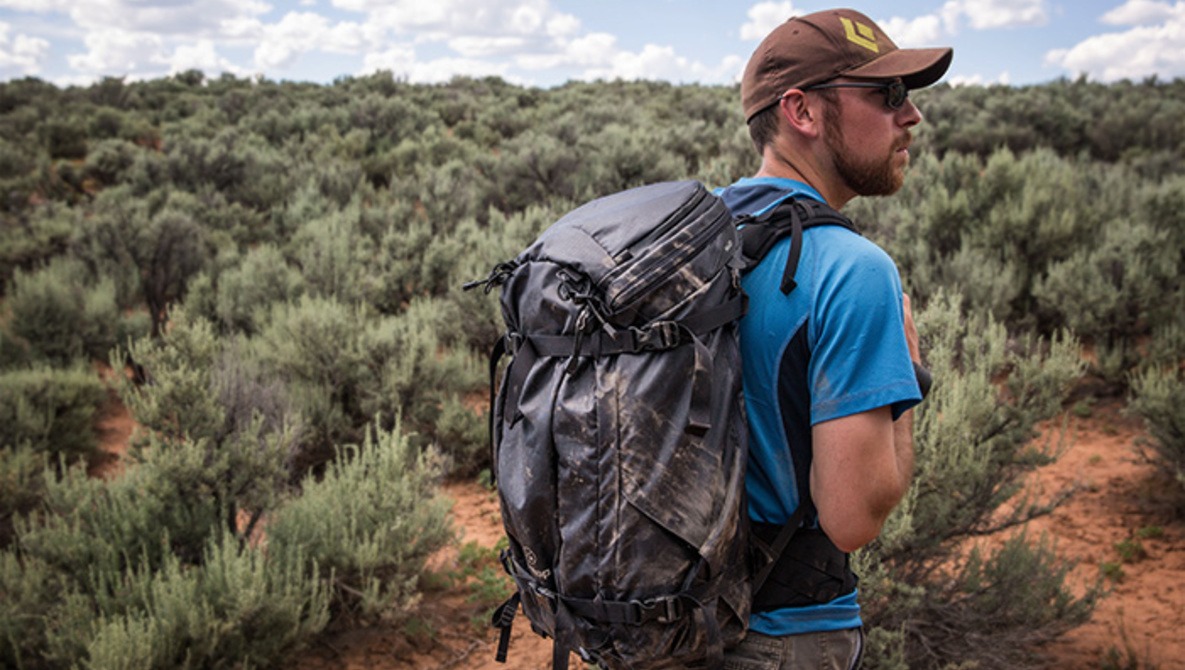




So what is the material? Are the zippers sealed at all?
according to their website it is: "a combination of oxford-weave ripstop nylon and AdvantaTM, a thermoplastic polyurethane film"
Someone really needs to make a proper adventure back pack where can fit all survival gear in swell.
At the mo, I'm using a British military began and stuff camera gear around clothes and in water proof bags. But there must a better design out there where i can get to the camera gear easier and then have room for sleeping bag, food water tent etc
Have you checked out their larger packs like the Satori or the Sukha?
Hi Mike,
Thanks so much for the honest and interesting review. I love the way you torture tested the bag - F-Stop users like me want to know how much protection it can provide. I don't think there's any bag short of a full waterproof design that can withstand a direct blast from a water hose. The new materials are an improvement for sure, but it's not magic as you've rightly pointed out.
Anyway, I hope you can help answer a few questions:
1. How is this pack in terms of carrying comfort compared to the lighter Loka? The Ajna has gained some weight, but boasts an improved harness system. Do you feel any practical difference? Sometimes, there's more to bags than specs - how it feels on the trail is ever so important.
2. The side pockets - can they be used to place one of the tripod feet in the vertical opening and still zip up as a means to support and carry a tripod instead of having it just dangling on the side compression straps? In the Loka, the tripod legs go into the side pocket which give me some reassurance that it's not just dangling on the straps. I'm concerned that with the new Mountain range, there are now no MOLLE attachments on the sides nor open pockets - I wonder how this will affect the way we carry tripods and light stands. What's your experience in this regard?
3. The hip belt - is it longer or shorter than the hip belt of the Loka? Do you like the slanted MOLLE attachments on the hip belt?
Thanks so much for your evaluation and answers to my questions.
It felt similar to the original Loka, maybe a touch more comfortable with about 30lbs in it.
The side straps cinch down plenty tight to allow for securing a tripod, but I'm not sure the pockets would help much– the zips are straight vertical so while you might be abl to angle a small travel tripod inside, it would be crooked coming out and you'd still need to secure it with the straps, so why bother with the pocket?
I like the loops on the hipbelt, the buckle on the Ajna is slightly smaller, and the size of the hip belt appears to me to be the same.
Thanks for the brief intro of this bag. One thing that had kept me from getting the Loka in the past was the ability to hold a large water bladder. I like to take a 3L camelbak with me when I go on long hikes and the Loka could only hold a 2L one. What size bladder and brand do you use? Do you think a 3L would fit if that isn't what you are using?